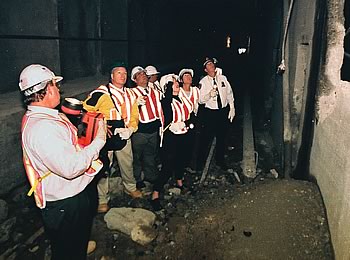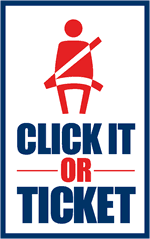|
|
|

|
Highway Trust FundFinancial Report for Fiscal Year 2004— Management's Discussion and Analysis — |
Table of Contents | Management's Discussion and Analysis | Financial Section | Appendices |
Significant Program AccomplishmentsFHWA
|
 |
|
FTA funded new subway projects to increase availability. |
FTA improved program delivery to its customers by making dramatic improvements in the timeliness of grant processing. In FY 2004, FTA processed 91 percent (against a target of 80 percent) of the grants awarded within 60 days of receiving a completed application.
FTA implemented a timesaving measure using “cost per new rider” to replace the “number of new riders” as a criteria used to assess new fixed guideway projects. The increased focus on ensuring a good return on investment, proactive project cost management by FTA, and project sponsors resulted in a total saving of $673 million for seven proposed investments.
Federal and local funding supported replacement and rehabilitation of the existing rail fleet and restoration of rail facilities, such as stations, tracks, yards, and shops. Nationally, there are 10,572 miles of track, 2,825 stations, and 1,369 rail maintenance facilities. According to FTA's most recent Conditions and Performance Report (2002), recent transit funding provided by all levels of government stabilized, but did not improve the condition of rail vehicles and facilities.
 |
|
Safety belt use in the United States reached an historic high of 80 percent in 2004. The Secretary and Administrator launched the annual “Click It or Ticket” campaign in May 2004. NHTSA expanded the high-visibility enforcement and paid media model of “Click It or Ticket” to address impaired driving. This campaign coincided with the Labor Day weekend, which is one of the most heavily traveled holiday weekends.
NHTSA collaborated with federal partners and states to promote alcohol screening and intervention, launching a major national impaired driving prevention initiative. In April 2004, 6,542 sites participated in the National Alcohol Screening Day, a 40 percent increase from last year. As of July 2004, the .08 Blood Alcohol Concentration laws were enacted in 50 states, the District of Columbia, and Puerto Rico with the passage of legislation in Delaware; however, Minnesota's law does not become effective until August 2005.
International road safety was a major FY 2004 initiative supported by NHTSA, the Centers for Disease Control and Prevention, many other federal agencies, and the Pan American Health Organization. Secretary Norman Y. Mineta celebrated World Health Day in France in April, while numerous road and traffic injury prevention activities were held in the United States and abroad.
In January 2004, BTS launched the new TSI. The TSI is a measure of the month-to-month changes in the freight and passenger travel output of services provided by the for-hire transportation industries, which include railroad, air, truck, and inland waterways transportation; pipeline transportation; and local mass transit. The TSI is expected to become a major economic indicator intended to measure the performance of the economy, but is still under development and is considered experimental.
In March 2004, BTS launched the ATPI. The ATPI is a measure of the change over time in the prices paid by air travelers. The index is based on actual fares paid by travelers, not published fares, and can be used to compare airfares in the most recent available quarter to any quarter since the base year of 1995. Although the ATPI is computed using a tested index methodology, the effective application of this methodology to the airlines' data is still under development and is considered a research series at this time.
BTS implemented two data programs (ATPI and Causes of Flight Delay) that offer air travelers and planners more frequent and meaningful information for decision-making. Causes of Flight Delay data of major U.S. carriers and airports offers a monthly breakout of various types of weather and non-weather related arrival delays.
In an effort to keep unqualified commercial motor vehicle (CMV) drivers off the nation's highways, FMCSA launched a major initiative to identify CDL testing and licensing fraud through enhanced compliance reviews of state programs, covert monitoring of state and third-party examiners, and through Social Security Number verification.
FMCSA efforts continued to implement the President's order to open the southern border to expanded CMV operations under NAFTA. In a unanimous decision, the United States Supreme Court helped to clear the way for implementation of three rules governing the operation of Mexico-domiciled commercial motor vehicles beyond the border commercial zones. This was due to the reversal of a January 2003 decision of the U.S. Court of Appeals for the Ninth Circuit, which held that FMCSA was not required to prepare an Environmental Impact Statement and Clean Air Act Conformity Analysis before promulgating the rules.
FMCSA significantly expanded and enhanced its Web-based database that informs consumers on their rights and responsibilities and serves as a guide in the selection of a reputable carrier. There are approximately 1.5 million shipments of household goods in the United States each year, roughly 600,000 of which are interstate moves. While most moves go smoothly, many consumers are experiencing difficulties in resolving disputes with problem movers and drivers. Consumer complaints are continuing to rise at an alarming rate, more than tripling in the past three years. During the first seven months of 2004, the Web site received over 650,000 hits.